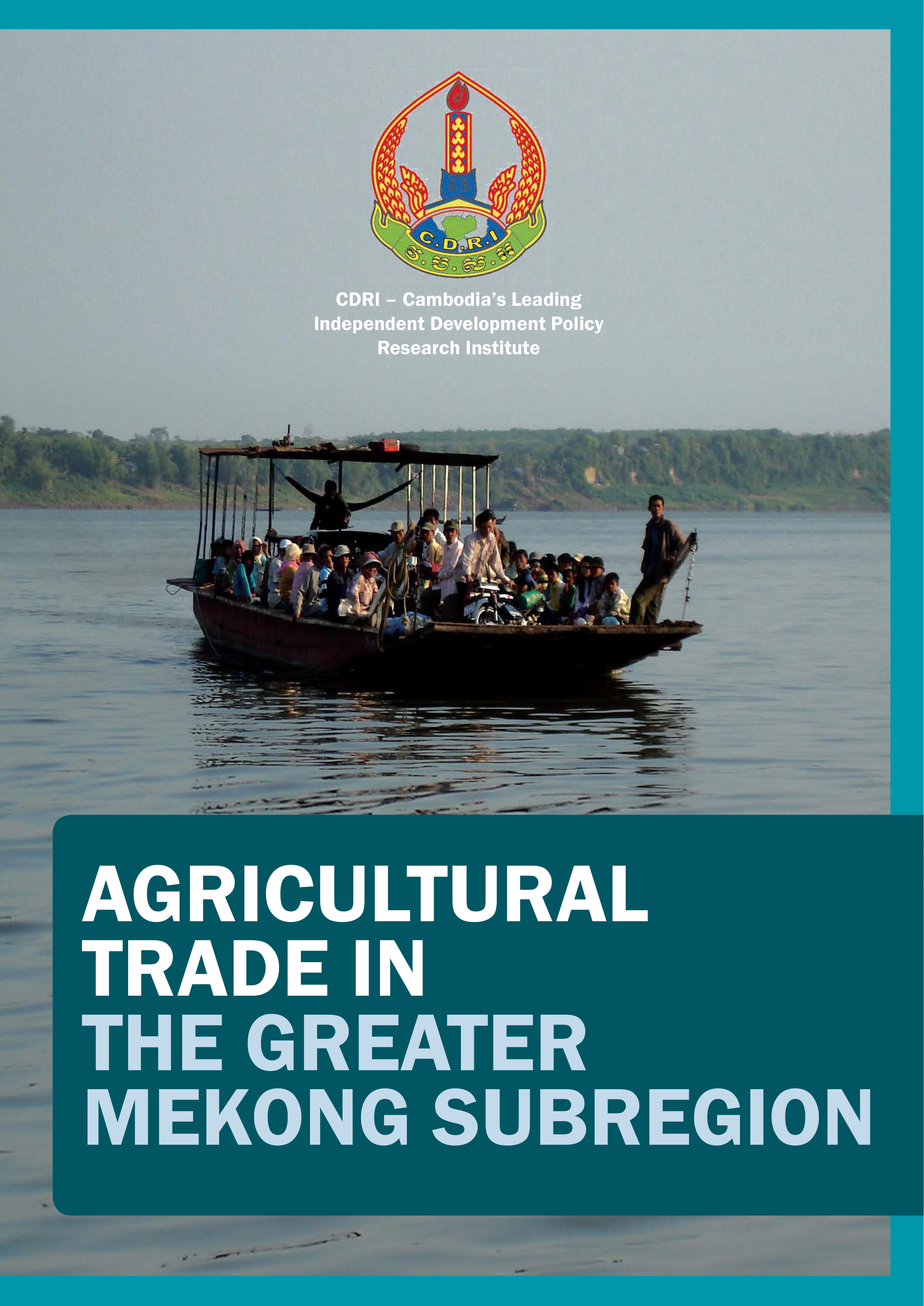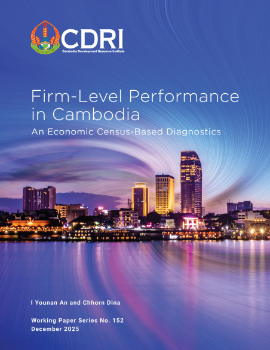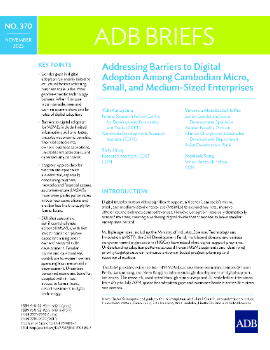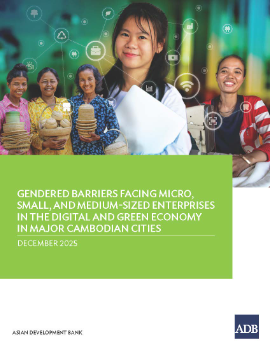
Agricultural Trade in the Greater Mekong Subregion
Abstract/Summary
The five country case studies help fill the gaps in the availability, quality and exchange
of information on agricultural production and trade in the
GMS particularly of cassava and rubber. The importance of
these two crops to individual GMS countries and individual
agricultural sectors may differ, but there are common reasons
underlying the value of cassava and rubber to their economies
and the households dependent on them. Cassava is a good
substitute for rice and an affordable feed for livestock. It has
become a profitable cash crop as demand for cassava in the
biofuel, paper and food-processing industries has shot up. In
contrast, rubber production has heightened over time. Both
commodities play a central role in employment creation and
poverty reduction.
The book can be found via this link.
Related Publications
Firm-Level Performance in Cambodia: An Economic Census-Based Diagnosti...

18-Dec-2025
Cambodia’s enterprise landscape remains structurally dualistic, characterised by an extensive base of micro and informal...
Addressing Barriers to Digital Adoption Among Cambodian Micro, Small,...

12-Dec-2025
Gender gaps in digital adoption are mainly linked to structural factors affecting business scale rather than gender-spec...
Gendered Barriers Facing Micro, Small, and Medium-Sized Enterprises in...

12-Dec-2025
Drawing on extensive data and stakeholder insights, it reveals how unequal access to knowledge, finance, and networks ca...
